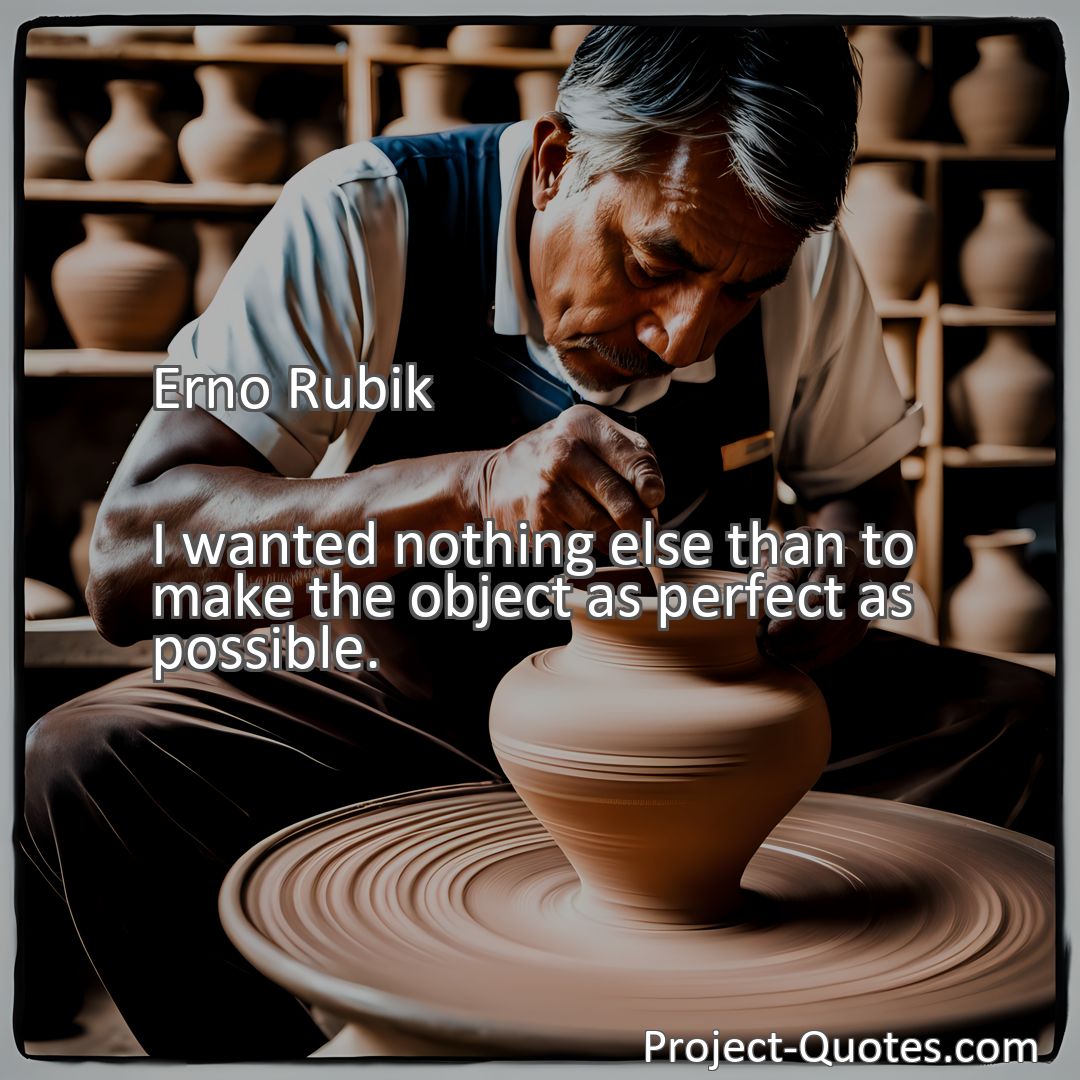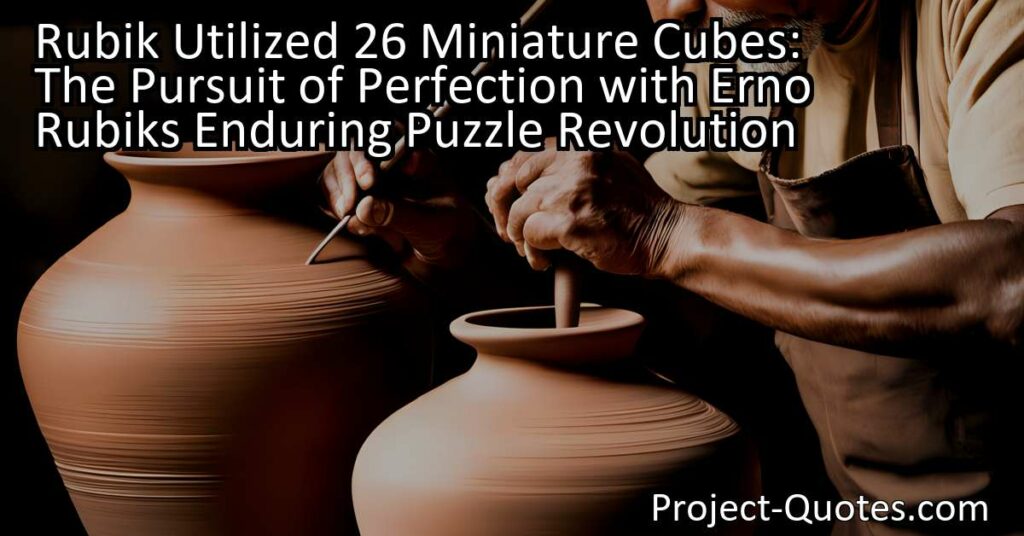I wanted nothing else than to make the object as perfect as possible.
Erno Rubik
Rubik Utilized 26 Miniature Cubes: The Pursuit of Perfection with Erno Rubik’s Enduring Puzzle Revolution Discover the fascinating story behind Erno Rubik’s creation of the iconic Rubik’s Cube. Learn how Rubik’s dedication to perfection led to the innovative use of 26 miniature cubes, resulting in a challenging and visually pleasing puzzle that has captured the hearts and minds of millions worldwide. Explore the lasting impact and cultural significance of this enduring symbol of creativity and intellectual challenge.
Table of Contents
Meaning of Quote – I wanted nothing else than to make the object as perfect as possible.
The Pursuit of Perfection: Erno Rubik’s Enduring Puzzle Revolution
Introduction :
Erno Rubik, the enigmatic inventor of the Rubik’s Cube, once remarked, “I wanted nothing else than to make the object as perfect as possible.” This simple yet profound statement encapsulates his unwavering dedication to his creation, a twisty puzzle that has become a global sensation. In this article, we delve into the mind of Erno Rubik and explore the genesis of his iconic invention. We will uncover the motivations, challenges, and extraordinary journey that led to the creation of the Rubik’s Cube, examining the enduring legacy it has left on the world.
Background and Inspiration :
Born on July 13, 1944, in Budapest, Hungary, Erno Rubik was always fascinated by puzzles and three-dimensional objects. As a professor of architecture, he embarked on a journey to develop a teaching aid that would illustrate complex spatial concepts to his students. Little did he know that this pursuit of educational perfection would lead to the birth of one of the most captivating and bestselling puzzles in history.
The Rubik’s Cube was first conceived in 1974 when Rubik realized the potential of a cube that could be twisted and turned, changing its myriad colors while retaining its original configuration. He wanted a toy that challenged the mind, encouraged creativity, and brought joy to millions of people worldwide. Rubik’s desire to make his creation as perfect as possible is evident in the intricate design principles he employed.
Design and Innovation :
When crafting the Rubik’s Cube, Rubik aimed to create a durable, ergonomic, and aesthetically pleasing puzzle. His relentless pursuit of perfection led him to meticulously engineer each aspect of the cube, from its geometric structure to its captivating color scheme.
To ensure the cube’s stability and functionality, Rubik utilized 26 miniature cubes interconnected by an ingenious mechanism. This design allowed for smooth rotation of individual layers while ensuring the puzzle’s integrity. The decision to use six solid colors white, yellow, red, orange, green, and blue was not arbitrary. Rubik carefully chose colors that were distinguishable and visually pleasing, ensuring accessibility for colorblind individuals as well.
Erno Rubik wanted every aspect of the Rubik’s Cube to be perfect, including its difficulty level. He designed the cube to possess an astronomical number of possible combinations, challenging even puzzle enthusiasts. However, Rubik also understood that solving the puzzle should be attainable with effort and strategic thinking. This delicate balance between complexity and solvability contributed to the cube’s immense popularity across a wide range of age groups.
Impact and Cultural Significance :
When the Rubik’s Cube was first introduced to the world in the early 1980s, it sparked a global craze that transcended cultural barriers. Its addictive nature and the sense of satisfaction upon solving it made the puzzle an instant hit. Rubik’s Cube soon became a cultural icon, captivating millions and inspiring a host of imitations, contests, and even international championships.
Beyond its entertainment value, the Rubik’s Cube also holds educational benefits. Its ability to enhance spatial cognition, logical thinking, and problem-solving skills has led to its inclusion in classrooms and therapy programs. The cube’s mathematical complexity and the perseverance required to solve it exemplify the importance of patience and perseverance, instilling valuable life lessons.
Erno Rubik’s pursuit of perfection has left an indelible mark on popular culture. Countless books, documentaries, and movies have been devoted to exploring the history, strategies, and impact of the puzzle. The Rubik’s Cube has inspired art installations, fashion designs, and even a ballet production. Its influence on the world of gaming and puzzles is unparalleled, as evident in the growing popularity of competitions and solving techniques.
Conclusion :
Erno Rubik’s quest for perfection in creating the Rubik’s Cube has birthed an enduring symbol of creativity, intellectual challenge, and fun. The iconic puzzle’s popularity continues to thrive today, granting people of all ages the opportunity to exercise their minds and engage with a timeless source of entertainment. The Rubik’s Cube serves as a reminder that through dedication, innovation, and a determination to make something perfect, one can leave a lasting legacy on the world.
I hope this quote inspired image brings you hope and peace. Share it with someone who needs it today!


